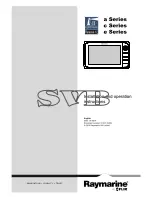
8
FEEDERS
Important factors to consider when choosing a feeder for animals
•
Different animals/individuals have different conditions, behaviours and temperaments. Whether you
have horses, cattle or sheep, there are different breed types, ages, individuals and thus different
behaviours. You know how your animals behave and what is best for them, and in order to avoid
injuries we ask you to think about how they react in various contexts where a feeder is involved.
If there are too many animals around the same feeder, the competition, and therefore the pressure
on the feeder, increases and there is a greater risk of injury.
•
You yourself are responsible for your choice of feeder model, since you know your animals best.
The number of animals that can gather around a feeder, the ranking in the herd, determines
the size of the feeder and how many feeders are appropriate. When it comes to animals with horns,
this must be taken into account when it comes to the choice of feeder.
•
When using a metal feeder, there may be sharp edges regardless of type or area of application.
As a user, you are always obliged to check that there is nothing that the animal can injure itself on –
make a habit of checking the feeder before use and at regular intervals, making sure that there are
no sharp edges or corners. As the owner of the animal, you are responsible for the equipment used
for your animal.
•
Make sure that the ground in and around the feeder is well drained, dry and clean.
•
Keep up to date via the Swedish Board of Agriculture’s rules concerning feed management for
animals in pastures. Always follow the applicable rules in the Animal Welfare Act
(jordbruksverket.se).
•
Where there is a suspicion that the individual may be injured, action should be taken prior to use
to minimise the risk of injury when using a combination of animals/feeder.
•
Always check the relevant animal and feeder combination in order to guarantee safety and
functionality.
•
There is often a lot of pressure when feeding around the feeder. The combination of adult/young
livestock always entails an increased risk for young animals.
•
Visually inspect/check the condition of the feeder regularly. If cracks or twisting are detected,
stop use and rectify the fault.
•
Check that all nuts and bolts are tightened. Repair if necessary.
•
IMPORTANT! Supervision should be carried out at least once per day during use.
•
Avoid having too few feeders for the number of animals.
•
The risk area is 5 metres. Only the operator is allowed to be within the risk area when moving the feeder.
•
When transporting, always follow the general traffic regulations.
•
It is prohibited to stand under the feeder when it is raised. Place the feeder on level and firm ground.
•
The feeder must be placed on level ground and not lowered into the ground, feed or snow. In order
to guarantee the safety of the animals and the strength of the feeder, make sure that the ground
in and around the feeder is well drained, dry and clean.
•
Make sure that the animals always have access to feed.
IMPORTANT!
It's important to remember that the strength of steel deteriorates When the temperature
falls below -25 degrees. It is particularly important to check that the feeder does not show signs of cracking
or is cracked.
Summary of Contents for 34-FHH8
Page 16: ...16 Table of contents ...
Page 17: ...17 Table of contents NOTES ...
Page 18: ...18 Table of contents NOTES ...






































